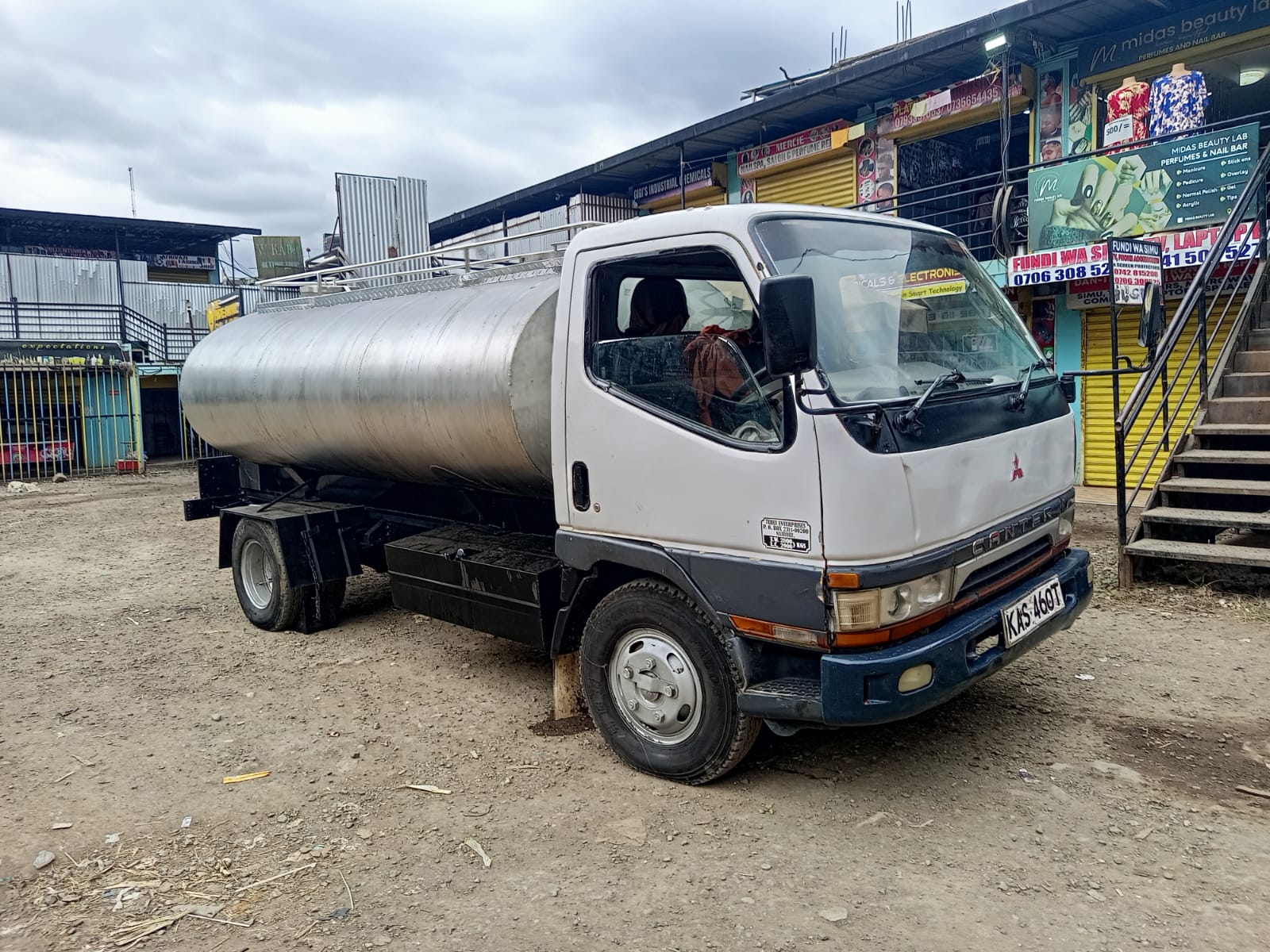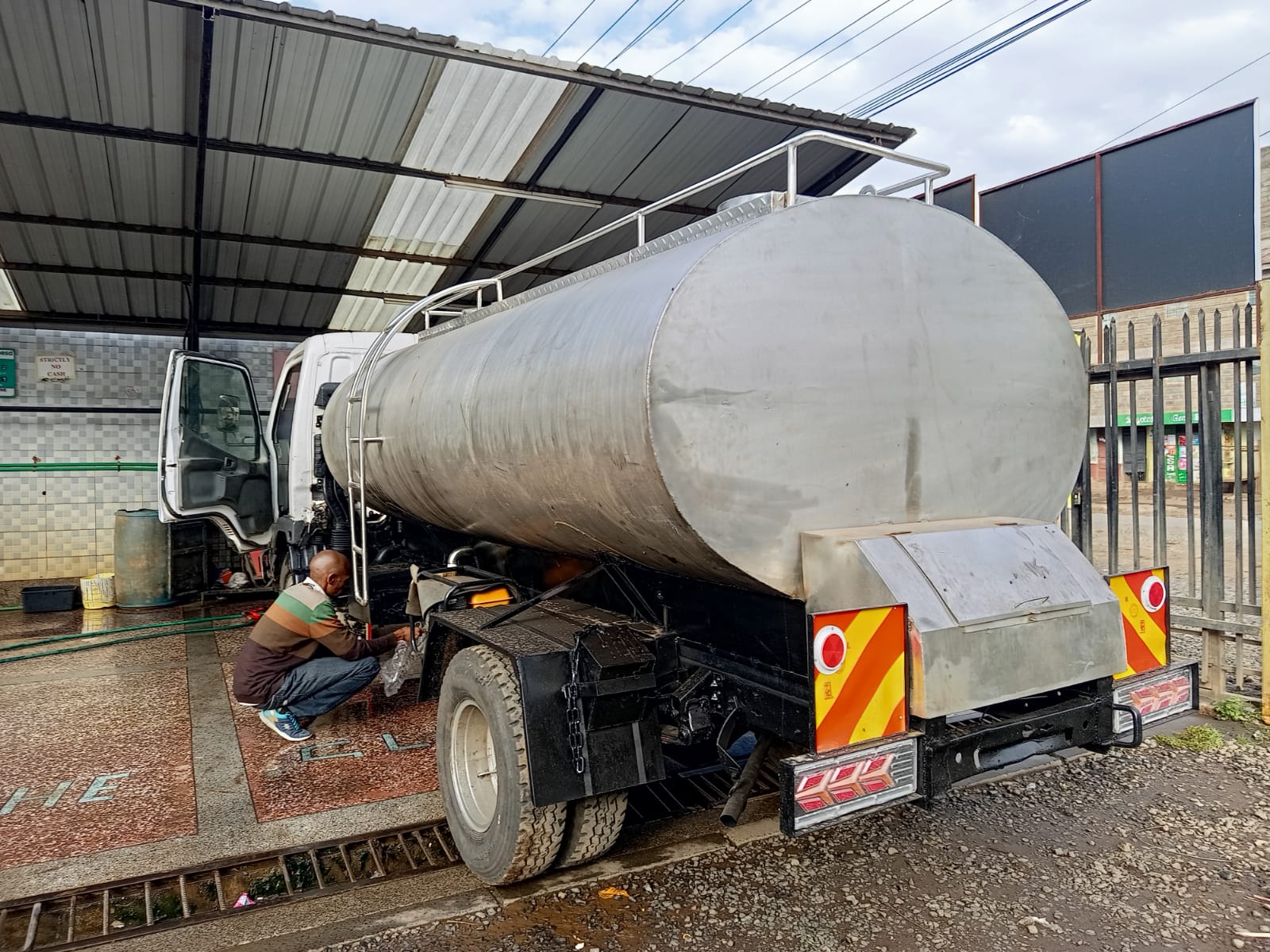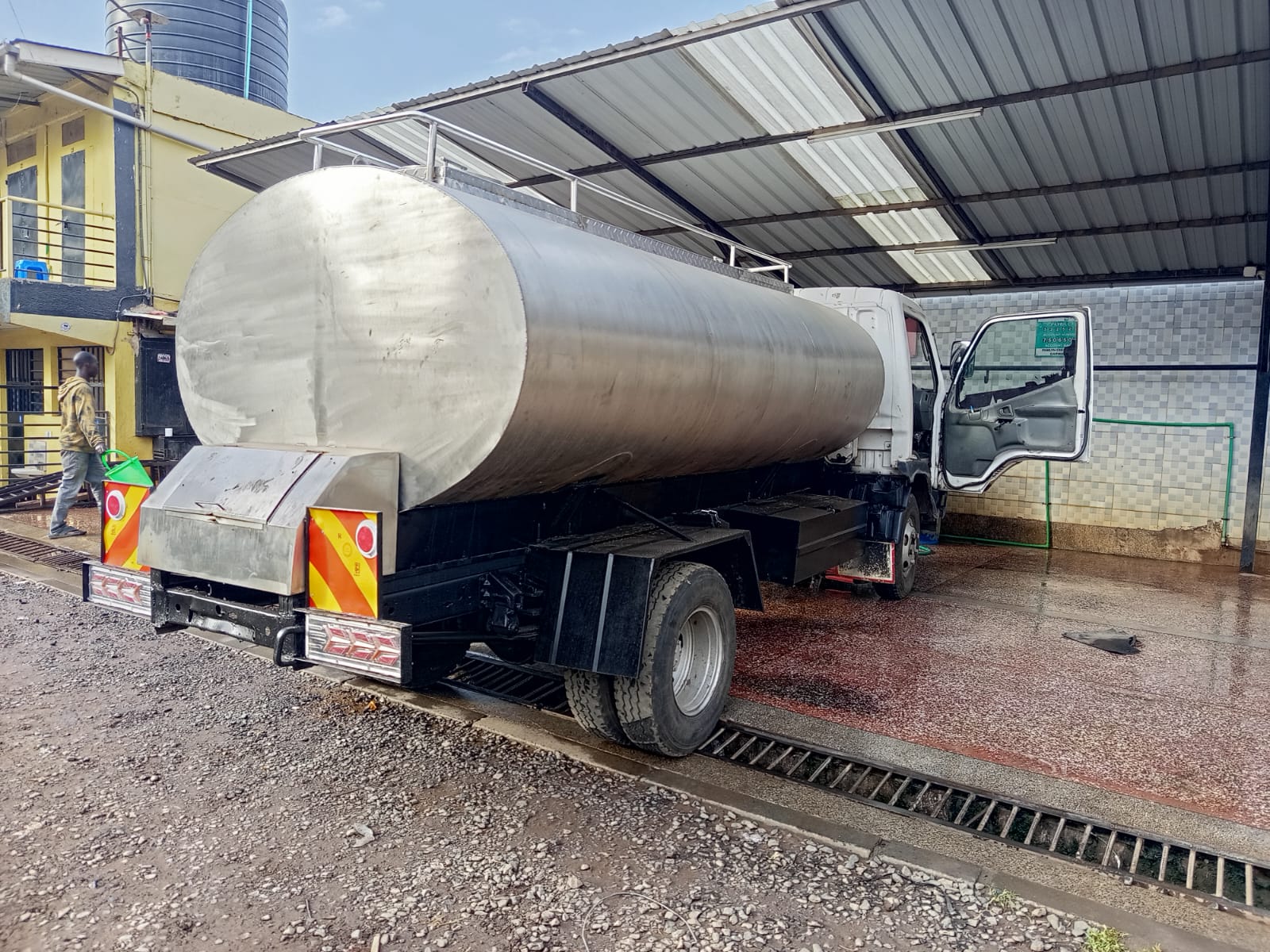The Liquid Transport Industry In Kenya: A Comprehensive Analysis of Market Dynamics and Growth Opportunities
The liquid transport industry in Kenya serves as a critical backbone for the country’s economic development and infrastructure growth. This vital sector encompasses the transportation of diverse liquids including water, milk, fuel, chemicals, and food-grade oils using specialized equipment and vehicles. As Kenya continues to experience rapid economic expansion and urbanization, the demand for efficient liquid transportation solutions has reached unprecedented levels, creating significant opportunities for industry stakeholders.
Overview of Kenya’s Liquid Transport Sector
Kenya’s liquid transport industry operates within a complex ecosystem that supports multiple economic sectors simultaneously. The maritime transport industry in Kenya has played a key role in this. The industry has evolved significantly over the past decade, driven by infrastructure development, agricultural modernization, and increasing industrial activities across the country. Modern liquid transportation systems now incorporate advanced safety features, environmental protection measures, and efficiency optimization technologies that align with international standards while addressing local market needs.
The sector’s growth trajectory reflects Kenya’s broader economic development patterns, with increased demand stemming from both urban centers and rural communities. Transportation companies now utilize sophisticated logistics management systems to optimize routes, reduce operational costs, and ensure timely delivery of liquid cargo. This technological advancement has transformed traditional transport operations into highly efficient, data-driven logistics networks that serve diverse client requirements across multiple industries.
Key Market Segments and Applications
 Agricultural Sector Requirements
Agricultural Sector Requirements
The agricultural sector represents one of the largest consumer segments for liquid transport services in Kenya. Dairy farming operations require specialized milk collection and delivery systems that maintain product quality throughout the transportation process. Modern milk transport solutions incorporate temperature control systems, hygienic tank designs, and rapid loading mechanisms that preserve nutritional value and prevent contamination during transit from farm to processing facilities.
Water delivery services have become increasingly important for agricultural operations, particularly in arid and semi-arid regions where reliable water access remains challenging. Specialized water transport tanks equipped with food-grade coatings and contamination prevention systems ensure that agricultural communities receive clean water for irrigation and livestock needs. These systems have proven essential for supporting Kenya’s food security objectives and rural development initiatives.
Industrial and Commercial Applications
Industrial liquid transport encompasses a wide range of specialized chemicals, petroleum products, and manufacturing inputs that require careful handling and transportation. Chemical transport operations must comply with strict safety regulations while utilizing corrosion-resistant tank systems designed for specific chemical properties. These applications demand highly trained operators and specialized equipment that can safely handle hazardous materials without compromising environmental safety standards.
Fuel and petroleum transport represents a critical component of Kenya’s energy distribution infrastructure. Modern fuel transport systems incorporate advanced safety features including explosion-proof components, emergency shutdown mechanisms, and vapor recovery systems. These technological improvements have significantly reduced environmental risks while improving operational efficiency throughout the petroleum supply chain.
Regulatory Framework and Compliance Standards
National Transport and Safety Authority Guidelines 
The National Transport and Safety Authority (NTSA) maintains comprehensive regulations governing liquid transport operations throughout Kenya. These regulations establish minimum safety standards for vehicle design, operator certification, and cargo handling procedures. Transport companies must demonstrate compliance with NTSA requirements through regular inspections, operator training programs, and equipment maintenance documentation to maintain operating licenses.
Safety protocols extend beyond basic vehicle requirements to encompass specialized training for hazardous material handling, emergency response procedures, and environmental protection measures. Operators must complete certified training programs that address specific risks associated with different types of liquid cargo. This regulatory framework ensures that transport operations maintain high safety standards while protecting both operators and the general public from potential hazards.
Environmental Protection Requirements
Environmental regulations play an increasingly important role in shaping liquid transport operations across Kenya. The National Environment Management Authority (NEMA) enforces strict standards for pollution prevention, waste management, and emergency response planning. Transport companies must implement comprehensive environmental management systems that address potential spill risks, air quality impacts, and waste disposal procedures.
Modern liquid transport operations incorporate advanced environmental protection technologies including spill containment systems, vapor recovery mechanisms, and real-time monitoring equipment. These systems help companies maintain compliance with environmental regulations while demonstrating corporate responsibility to local communities. Regulatory compliance has become a competitive advantage for companies that invest in advanced environmental protection technologies.
Technological Innovations in Liquid Transport
 Advanced Tank Design and Manufacturing
Advanced Tank Design and Manufacturing
Contemporary liquid transport tanks incorporate sophisticated design features that optimize safety, efficiency, and durability. Stainless steel construction has become the industry standard due to its corrosion resistance, ease of cleaning, and long service life. Modern tank designs include multiple compartments, specialized baffle systems, and integrated monitoring equipment that enhances operational capabilities while ensuring cargo integrity.
Manufacturing processes now utilize automated welding systems, computer-aided design software, and comprehensive quality testing protocols. These technological advances result in transport tanks that meet international quality standards while remaining cost-effective for local market conditions. Advanced manufacturing capabilities enable customization options that address specific industry requirements and operational constraints.
Safety and Monitoring Systems
Modern liquid transport vehicles incorporate comprehensive safety monitoring systems that provide real-time information about cargo conditions, vehicle performance, and environmental factors. GPS tracking systems enable fleet managers to monitor vehicle locations, optimize routing, and respond quickly to emergency situations. These technological capabilities have significantly improved operational efficiency while enhancing safety outcomes across the industry.
Emergency response systems include automatic shutdown mechanisms, spill containment features, and communication systems that enable rapid response to potential incidents. Driver training programs now incorporate simulation technologies that prepare operators for various emergency scenarios. These comprehensive safety measures have reduced accident rates while improving public confidence in liquid transport operations.
Market Challenges and Opportunities
Infrastructure Development Needs
Kenya’s liquid transport industry faces ongoing challenges related to road infrastructure quality and maintenance. Poor road conditions increase vehicle wear, extend delivery times, and raise operational costs throughout the supply chain. However, government infrastructure investment programs are gradually improving road networks, creating opportunities for more efficient transport operations and expanded service coverage.
Strategic infrastructure projects including the Standard Gauge Railway and expanded port facilities are creating new opportunities for liquid transport services. These developments enable more efficient cargo handling, reduced transport distances, and improved connectivity between production centers and consumer markets. Forward-thinking transport companies are positioning themselves to capitalize on these infrastructure improvements through strategic investments and operational expansion.
Regulatory Compliance Costs
Compliance with safety and environmental regulations requires significant ongoing investments in equipment, training, and operational procedures. Smaller transport companies often struggle to meet these requirements due to limited financial resources and technical expertise. However, regulatory compliance creates competitive advantages for companies that invest in advanced equipment and comprehensive training programs.
Industry consolidation trends favor companies that can demonstrate consistent regulatory compliance and operational excellence. This creates opportunities for well-capitalized companies to expand market share through acquisitions and strategic partnerships. Regulatory requirements ultimately strengthen the industry by eliminating substandard operators and improving overall service quality.
Economic Impact and Growth Projections
Contribution to National Economy 
The liquid transport industry contributes significantly to Kenya’s gross domestic product through direct employment, tax revenue, and supply chain support services. Industry growth correlates directly with broader economic expansion as increased industrial activity, agricultural production, and consumer demand drive transportation requirements. Economic multiplier effects extend throughout related industries including vehicle manufacturing, maintenance services, and logistics support.
Employment opportunities within the liquid transport sector continue expanding as companies invest in fleet expansion and operational improvements. Skilled positions including drivers, technicians, and logistics coordinators offer stable career paths for Kenyan workers. Training programs developed in partnership with educational institutions help ensure adequate skilled labor supply for industry growth requirements.
Future Growth Drivers
Several factors position Kenya’s liquid transport industry for continued expansion over the next decade. Population growth and urbanization increase demand for water delivery, fuel distribution, and food transportation services. Industrial development initiatives create new requirements for chemical transport and specialized liquid handling capabilities. Agricultural modernization programs drive demand for efficient milk collection and water delivery systems.
Regional trade expansion through initiatives like the African Continental Free Trade Area creates opportunities for cross-border liquid transport services. Kenyan companies with advanced capabilities and regulatory compliance can expand operations into neighboring markets. Export opportunities for specialized transport equipment and services represent additional growth potential for industry leaders.
Competitive Landscape Analysis
Market Structure and Key Players
Kenya’s liquid transport industry includes both established companies with extensive fleet operations and specialized manufacturers focusing on equipment supply. Competition occurs across multiple dimensions including service reliability, safety performance, technological capabilities, and cost effectiveness. Market leaders distinguish themselves through comprehensive service offerings, geographic coverage, and specialized expertise in particular industry segments.
International companies bring advanced technologies and operational expertise to the Kenyan market while local companies provide deep market knowledge and responsive customer service. Strategic partnerships between international and local companies often create competitive advantages that benefit from both global expertise and local market understanding. This collaborative approach accelerates technology transfer and capability development within the domestic industry.

Innovation and Differentiation Strategies
Leading companies differentiate themselves through investments in advanced equipment, comprehensive training programs, and superior customer service capabilities. Technology adoption including fleet management systems, predictive maintenance programs, and real-time monitoring capabilities creates operational advantages that translate into improved customer satisfaction and market share growth.
Specialization strategies focusing on particular industry segments or geographic regions enable companies to develop deep expertise and strong customer relationships. Companies that invest in understanding specific customer requirements and developing tailored solutions often achieve premium pricing and customer loyalty. Innovation in service delivery models creates competitive advantages that are difficult for competitors to replicate quickly.
Regional and International Comparisons
East African Market Context
Kenya’s liquid transport industry operates within the broader East African regional market where cross-border trade creates additional opportunities and challenges. Regional infrastructure development projects improve connectivity while harmonized regulations facilitate trade expansion. Kenyan companies often serve as regional hubs for liquid transport services due to the country’s strategic location and advanced infrastructure.
Comparative analysis with neighboring countries reveals opportunities for technology transfer, best practice sharing, and collaborative development initiatives. Regional cooperation in areas such as safety standards, environmental protection, and operator training benefits the entire East African transport industry. Kenya’s leadership in regulatory development and technology adoption positions the country as a regional hub for industry advancement.
International Best Practices
Global trends in liquid transport technology and operations provide valuable insights for Kenyan industry development. Advanced countries have developed sophisticated approaches to safety management, environmental protection, and operational efficiency that can be adapted for local conditions. International partnerships facilitate technology transfer and knowledge sharing that accelerates domestic industry advancement.
Sustainability initiatives including alternative fuel technologies, emission reduction systems, and circular economy principles are increasingly important for international competitiveness. Kenyan companies that adopt these practices early gain competitive advantages in both domestic and international markets. Environmental leadership creates opportunities for premium pricing and preferred supplier status with environmentally conscious customers.
Technology Trends and Future Outlook
Digital Transformation Opportunities
Digital technologies including Internet of Things sensors, artificial intelligence, and blockchain systems offer significant opportunities for operational improvement within Kenya’s liquid transport industry. Real-time monitoring systems provide unprecedented visibility into cargo conditions, vehicle performance, and supply chain efficiency. Data analytics capabilities enable predictive maintenance, route optimization, and demand forecasting that improve operational efficiency.
Mobile technologies facilitate improved communication between drivers, dispatchers, and customers while providing real-time updates on delivery status and schedule changes. Digital payment systems streamline financial transactions and improve cash flow management for transport companies. These technological capabilities create competitive advantages while improving customer satisfaction and operational efficiency.
Sustainability and Environmental Innovation
Environmental sustainability has become a critical consideration for liquid transport operations as customers and regulators demand reduced environmental impact from transportation services. Electric and hybrid vehicle technologies offer potential solutions for reducing emissions, though infrastructure requirements and operational constraints must be addressed. Biofuel adoption provides interim solutions for emission reduction while supporting domestic agricultural production.
Circular economy principles including tank recycling, waste reduction, and resource optimization create opportunities for operational cost reduction while demonstrating environmental responsibility. Companies that develop comprehensive sustainability programs often achieve preferred supplier status with environmentally conscious customers. Sustainability leadership creates competitive advantages that support premium pricing and market share growth.

Investment Opportunities and Market Entry Strategies
Capital Requirements and Financing Options
Entry into Kenya’s liquid transport industry requires significant capital investments in specialized equipment, regulatory compliance systems, and operational infrastructure. Financing options include traditional bank lending, equipment leasing arrangements, and development finance institution support. Government programs supporting infrastructure development and industrial growth provide additional funding opportunities for qualified companies.
Strategic partnerships with established industry players offer alternative market entry approaches that reduce capital requirements while providing access to existing customer relationships and operational expertise. Joint ventures enable risk sharing while combining complementary capabilities from different organizations. These collaborative approaches often accelerate market entry while reducing overall investment requirements.
Strategic Considerations for New Entrants
Market entry strategies must consider regulatory requirements, competitive dynamics, and customer preferences within specific industry segments. Specialization in particular liquid types or geographic regions often provides advantages over broad market approaches due to reduced competition and deeper customer relationships. Understanding local market conditions and customer requirements is essential for developing effective competitive strategies.
Technology adoption and operational excellence provide sustainable competitive advantages that are difficult for competitors to replicate quickly. Companies that invest in advanced equipment, comprehensive training programs, and superior customer service capabilities often achieve market leadership positions. Long-term success requires continuous investment in capability development and market understanding.
Summary and Industry Outlook
Kenya’s liquid transport industry stands at a critical juncture where increasing demand, technological advancement, and regulatory evolution create both opportunities and challenges for industry participants. The sector’s vital role in supporting agricultural development, industrial growth, and infrastructure expansion ensures continued growth potential over the coming decade. Success in this dynamic environment requires strategic investments in advanced equipment, comprehensive safety programs, and customer-focused service delivery capabilities.
Future industry development will be shaped by technological innovation, environmental sustainability requirements, and regional market integration initiatives. Companies that proactively address these trends while maintaining operational excellence will be best positioned to capitalize on growth opportunities. The industry’s evolution toward higher safety standards, environmental responsibility, and technological sophistication creates competitive advantages for companies that embrace these changes while serving diverse customer requirements across multiple market segments.
Gditech Kenya: the Leading Liquid Transport Tank Manufacturing in Kenya
 As recognized industry leaders, we at Gditech Kenya have established ourselves as the premier manufacturer of specialized liquid transport tanks throughout East Africa. Our comprehensive manufacturing capabilities and commitment to quality excellence have positioned us as the preferred partner for companies requiring reliable, safe, and efficient liquid transport solutions. We combine advanced manufacturing technologies with deep understanding of local market requirements to deliver transport tanks that exceed international quality standards while remaining cost-effective for diverse operational needs.
As recognized industry leaders, we at Gditech Kenya have established ourselves as the premier manufacturer of specialized liquid transport tanks throughout East Africa. Our comprehensive manufacturing capabilities and commitment to quality excellence have positioned us as the preferred partner for companies requiring reliable, safe, and efficient liquid transport solutions. We combine advanced manufacturing technologies with deep understanding of local market requirements to deliver transport tanks that exceed international quality standards while remaining cost-effective for diverse operational needs.
Our manufacturing facility represents the pinnacle of stainless steel fabrication technology, utilizing automated welding systems and computer-aided design capabilities to produce consistently superior transport tanks. We specialize in creating Gditech Kenya liquid transport tanks that incorporate advanced safety features, environmental protection systems, and operational efficiency enhancements. Our commitment to continuous innovation and customer satisfaction has made us the trusted choice for leading companies across agriculture, petroleum, water distribution, and industrial sectors throughout Kenya and the broader East African region.
Ready to invest in a high quality stainless steel transport tank made in Kenya by Gditech?
Gditech Kenya stainless steel transport tanks are manufactured for real-world demands. Whether you’re in the fuel transport industry, want to build a logistics fleet, running a dairy farm, or operating a water delivery venture, you can trust us to build tanks that meet your business goals.
Contact us today to place an order, get a custom quote, or schedule a consultation.
Contact us today to order a liquid transport tank
To order, contact us using any of the means below:
- Call/WhatsApp: +254 715 01 45 10
- Email: gditech2019@gmail.com, info@gditech.co.ke
- Location: You are welcome to visit our branches located strategically in Ruru and Eldoret:
- Ruiru Branch: You can find us Next to Total Petrol Station- Kihunguro, Ruiru Kenya – Thika Road, where our dedicated team is ready to assist you.
- Eldoret Branch: You can visit our Eldoret branch at Rehema Complex, opposite Japara Ltd., along Oloo Street in Eldoret. Our branch staff will provide you with personalized guidance and support.
References:
- Kenya National Bureau of Statistics. “Kenya Sea Transport: Principal Commodities Shipped: Exports: Bulk Liquids.” CEIC Data. Accessed August 29, 2025. https://www.ceicdata.com/en/kenya/sea-transport-port-and-shipping/sea-transport-principal-commodities-shipped-exports-bulk-liquids
- United Nations Framework Convention on Climate Change. “Kenya’s Third National Greenhouse Gas Inventory Document.” Accessed August 29, 2025. https://unfccc.int/sites/default/files/resource/Kenya%20National%20Inventory%20Document.pdf
- National Oil Corporation of Kenya. “Upstream.” Accessed August 29, 2025. https://nationaloil.co.ke/upstream/
- Kenya Civil Aviation Authority. “Cargo and Mail Traffic.” Accessed August 29, 2025. https://www.kcaa.or.ke/about-us/statistics/cargo-and-mail-traffic
- SGS Kenya. “Dangerous Goods & Cargo Compliance.” Accessed August 29, 2025. https://www.sgs.com/en-ke/service-groups/dangerous-goods-and-cargo-compliance
- eProcedures Kenya. “Transport of LPG in cylinders licence.” Invest Kenya. Accessed August 29, 2025. https://eprocedures.investkenya.go.ke/procedure/307?l=en
- Kenya Revenue Authority. “The Excise Duty Regulations, 2019.” Accessed August 29, 2025. https://www.kra.go.ke/images/publications/The-Excise-Duty-Regulations-2019-Draft.pdf




